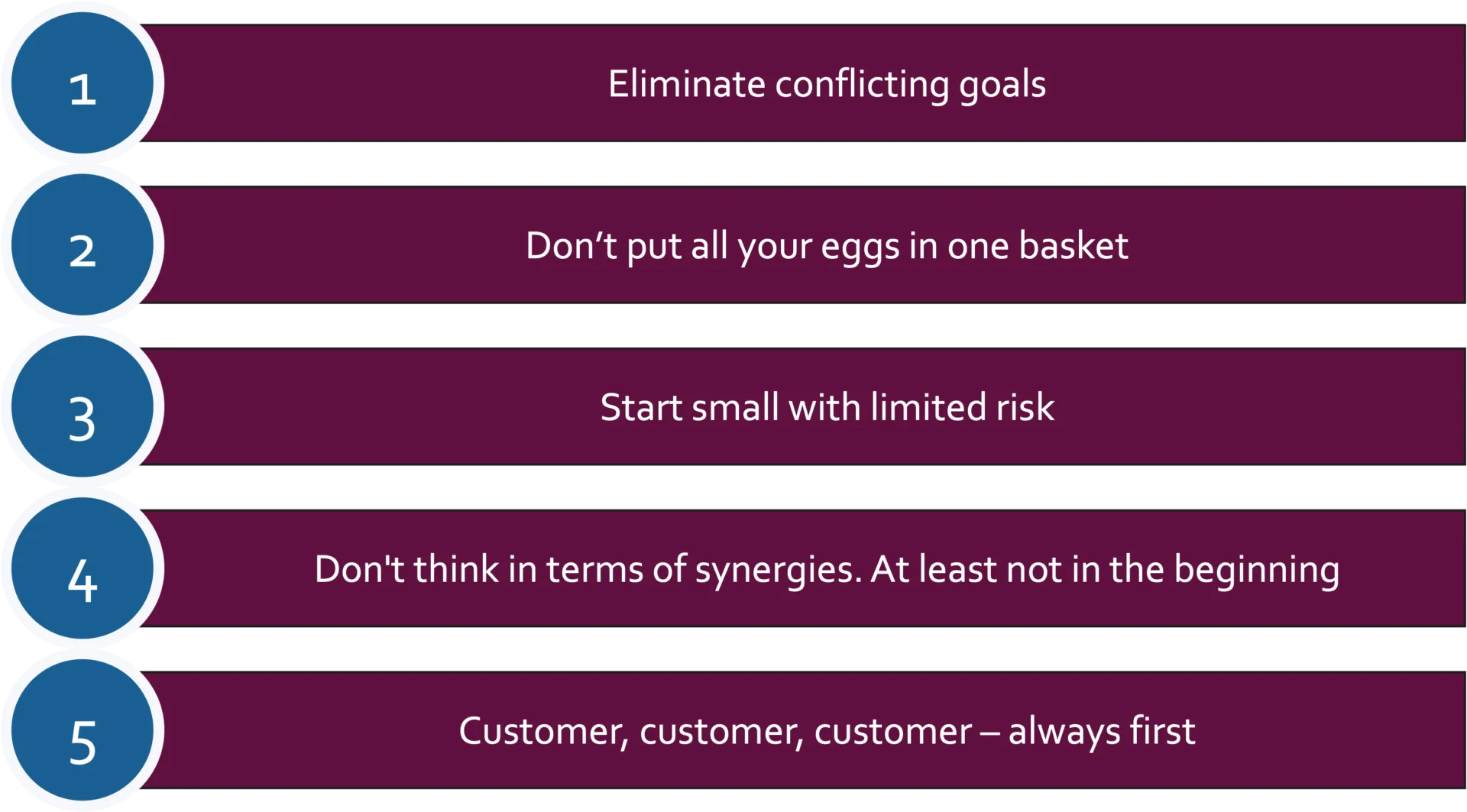Blueprints for business innovation
From numerous projects, we have summarized practical tips for building new business models that not everyone yet knows or takes to heart.

For many media companies, new business models are at the top of the strategic agenda. There is no shortage of methods, from the Business Model Canvas to Continuous Agile Innovation, the bookshelves are well stocked. In practice, much more elementary issues often determine success. We present five of them here.

Eliminate conflicting goals
In many cases, innovation starts like any other project running alongside day-to-day business. Goal and capacity conflicts are the inevitable result, not only for the innovator himself, but also for his superiors (e.g., loss of revenue due to lack of capacity in the day-to-day business). Adjust not only the innovator's incentives, but also those of his environment. After all, the supervisor is missing one of his best employees or the team is missing a very good colleague. If you don't do it, you will see that your target systems actually work and prevent innovation.
Don't put all your eggs in one basket
Following the principle of clear responsibilities, a single employee is usually assigned to innovate. He or she assumes the function of the entrepreneur in the company. However, a good entrepreneur needs many skills, including strategic foresight, market/product knowledge and pragmatic implementation skills. Finding all these qualities in one person (who is also available) is very unlikely. Therefore, rely on teams that complement each other. Alternative: Hire an innovation coach to support the internal entrepreneur.
Start small with limited risk
The usual processes in a company are designed for safety. Decision templates and business plans identify (with a shred of accuracy) any risk and avoid it. Budgets are decided and spent. This is how your classic processes work. For a new business model, you should do it the other way around. Start very quickly, with a rough vision and a Minimum Viable Product (MVP). Before you analyze for a long time, rather test the market with an idea or a fake offer ("fake it until you make it"). This is how startups operate. Start fast and rather decide every three months whether to give the idea more money ("lean agile and fail fast"). When innovating, consciously break your decision-making rhythms and cultures, because in case of doubt they are designed for safety and prevent innovation.
Don't think in terms of synergies - at least not at the beginning
It's tempting to think of integrating new business models into your existing business, or at least leveraging its strengths. But it usually leads to the quick death of innovation. Existing business models are usually trimmed for efficiency and have their own goals, processes and rules. Like a roller, they crush the tender seedling of innovation or it doesn't even come out of the ground. It's especially hard for management because they often see their role as identifying and leveraging synergies. But resist the temptation - innovation should stand on its own first.
Customer, customer, customer - always first
Actually a triviality, yet one of the most common (and understandable) mistakes. A media company has many strengths, including brand, reach, content, customer access and much more. Nothing is more obvious than to bundle these advantages in a new way. This results in offers that sound good in theory, but don't always hit the market. Again, the startup mindset applies: build an MVP and try to sell it. Most digital success stories started that way, as a simple website with analog processes behind it. A website is made in a few days, as is a sales brochure. So you can test customer needs before you start the real work (and investment).
Related insights
